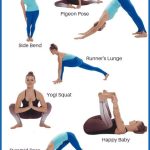Mastering Cross-Training Techniques for Yoga Enthusiasts: A Comprehensive Guide
Introduction
Yoga is a profound practice, offering physical, mental, and spiritual benefits. But even dedicated yogis can face challenges in flexibility, strength, and endurance. Incorporating cross-training exercises into a yoga regimen helps balance these aspects, enhancing overall fitness and preventing injury. This article explores essential cross-training techniques for yoga fans, their benefits, practical applications, and implementation strategies.
Key Concepts
Cross-training is the strategic integration of different exercise modalities to improve performance in a primary discipline—in this case, yoga. The objective is to target areas not fully developed by yoga alone, such as cardiovascular strength, muscle endurance, and dynamic stability.
Benefits of Cross-Training for Yoga Practitioners
- Injury Prevention: A balanced exercise regimen reduces the risk of overuse injuries by targeting various muscle groups and movement patterns.
- Strength and Stability: Cross-training builds core strength and joint stability, which are vital for advanced yoga poses.
- Increased Flexibility: Dynamic movements from other disciplines can complement and deepen a yogi’s range of motion.
Historical Context
The integration of cross-training principles into yoga practice is not entirely new. In ancient yoga practices, martial arts and traditional physical conditioning techniques were often included. Modern cross-training emerged in the mid-20th century when athletes began supplementing their primary workouts to enhance all-around fitness.
Current State Analysis
Today, many yoga instructors recommend cross-training as a way to balance yoga’s meditative and slow-paced aspects with dynamic, muscle-building workouts. However, some practitioners still resist, believing that yoga alone suffices for overall fitness. To overcome this resistance, understanding the current landscape and mindset of the yoga community is crucial.
Practical Applications
1. Strength Training
Incorporating strength training, such as weightlifting, resistance bands, or bodyweight exercises, enhances muscular endurance. This helps yogis hold poses for longer and protects joints during deep stretches.
- Example Exercise: Incorporate a 3×10 set of Goblet Squats to build lower body strength crucial for poses like Warrior III.
- Challenge: Avoid muscle tightness by incorporating additional stretching post-training.
- Solution: Include a 5-minute cooldown with deep hip stretches.
2. Cardiovascular Conditioning
Cardio workouts, like running, cycling, or swimming, enhance cardiovascular health and stamina, which improves breath control in yoga.
- Example Routine: Integrate two 30-minute steady-state runs weekly to increase endurance for pranayama breathing techniques.
3. Mobility and Balance Work
Integrating Pilates or balance-focused training builds stability in poses that require refined muscle control.
- Example Exercise: Include Single-Leg Deadlifts for enhanced stability in Tree Pose.
Case Studies
| Case Study | Challenge | Cross-Training Approach | Outcome |
|---|---|---|---|
| Amanda, 35, Experienced Yogi | Lacked upper body strength for advanced arm balances | Added resistance band exercises targeting shoulders and triceps | Mastered Crow Pose and Side Crow within 3 months |
| John, 28, Yoga Beginner | Poor endurance for extended sessions | Incorporated running twice a week | Increased session length by 15 minutes over 2 months |
Stakeholder Analysis
The primary stakeholders in the adoption of cross-training are yoga practitioners, instructors, physiotherapists, and fitness trainers. Their concerns include maintaining the authenticity of yoga while introducing new training modalities, and ensuring practitioners stay injury-free.
Implementation Guidelines
- Start by assessing your current limitations in yoga practice.
- Consult a fitness professional to design a cross-training plan tailored to your needs.
- Begin with low-intensity cross-training sessions twice a week to avoid overexertion.
- Focus on building complementary skills, such as core strength and dynamic flexibility.
Ethical Considerations
Cross-training in yoga requires careful balancing to avoid diluting the spiritual and philosophical aspects of yoga. Practitioners must ensure that their cross-training approach remains aligned with the core principles of self-awareness and non-harming (Ahimsa).
Limitations and Future Research
While cross-training benefits most practitioners, individuals with pre-existing injuries or specific medical conditions may require specialized plans. Future research should focus on developing adaptive cross-training methods tailored for different body types and levels of experience.
Expert Commentary
According to fitness experts, integrating cross-training with yoga practice offers a balanced approach to overall fitness and injury prevention. The combination of static and dynamic exercises helps to build a well-rounded physique while preserving the mental and spiritual aspects of yoga. It’s vital to tailor cross-training plans to individual goals and limitations, ensuring that both practices complement one another harmoniously.








